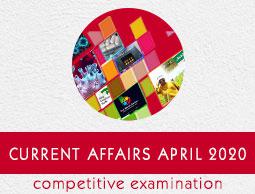Current Affairs April 2020 - Science
1 - Bharat Biotech working on developing a nasal vaccine for COVID-19

Hyderabad-based biotech company, Bharat Biotech, is working on developing a nasal vaccine for COVID-19. An international collaboration of virologists at the University of Wisconsin, Madison and the vaccine companies FluGen along with Bharat Biotech has begun the development and testing of a vaccine called CoroFlu.
Bharat Biotech will manufacture the vaccine, conduct clinical trials, and prepare to produce almost 300 million doses of vaccine for global distribution. CoroFlu will build on the backbone of FluGen's flu vaccine candidate known as M2SR.
2 - NASA selected SunRISE Mission to study Giant Solar Particle Storms

NASA has selected a new mission to study how the Sun generates and releases giant space weather storms, known as solar particle storms into planetary space. The new mission, called the Sun Radio Interferometer Space Experiment (SunRISE), is an array of six CubeSats operating as one very large radio telescope.
The mission will improve information on understanding of how our solar system works and can help in protecting the astronauts who are traveling to the Moon and the Mars, by providing better information on how the Sun’s radiation affects the space environment they must travel through.
3 - IISc Bengaluru developed indigenous ventilator prototype in view of COVID-19 crisis
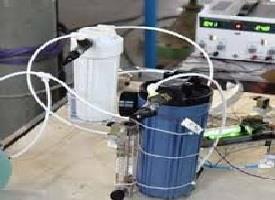
A group of Scientists and students in Indian Institute of Science in Bengaluru have developed an indigenous ventilator prototype to tackle the worst case scenario of contagious disease COVID-19. The prototype is developed under project Praana.
The prototype has mass flow sensors and controllers which accurately tell how much oxygen is flowing and what volume the patient is inhaling in one breath. Pneumatics is built around mass produced water filter hardware. The control system is built around open source industrial controller.
4 - Prana Vayu Portable Ventilator developed by IIT Roorkee

The Indian Institute of Technology (IIT)-Roorkee, in collaboration with All India Institute of Medical Science (AIIMS), Rishikesh, has developed a low-cost ventilator. It will cost ₹25,000 per unit. It is low-cost, safe, reliable, and can be quickly manufactured.
‘Prana-Vayu’ is a closed-loop ventilator that can deliver the required amount of air to the patient, with an automated process controlling the pressure and flow rates. It also has feedback that can control tidal volume and the number of breaths per minute.
5 - Bione launched India’s first home screening test kit of COVID-19

Genetic and microbiome testing firm Bione launched a rapid COVID-19 at-home screening test kit. It is a simple point-of-care home screening kit that displays accurate results within minutes. The kit priced between INR 2000-3000, is approved by the Indian Council of Medical Research (ICMR).
COVID-19 Screening test kit is an IgG & IgM based tool, where user has to clean their finger with alcohol and use the lancet provided to finger-prick. The cartridge provided reads the results from the blood sample within 10 minutes.
6 - Indian Railways makes low cost prototype of Ventilator
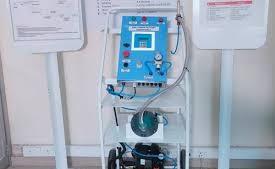
Indian Railways developed a low-cost ventilator named as Jeevan, at its Kapurthala Rail Coach Factory, that can be useful to ensure the survival of COVID-19 patients. Ventilator costing Rs. 10,000 without compressor is yet to get approval from ICMR.
Jeevan ventilator has compressed air container to work the Ambu bag with air without any moving parts like servo motor or piston or link mechanism. It will provide control on breathing rate, expiratory ratio and tidal volume.
7 - NASA’s Artemis to launch first human base camp on moon’s south-pole by 2024

With the Artemis program, NASA will land the first woman and next man on the Moon by 2024, using innovative technologies to explore more of the lunar surface than ever before. NASA unveiled plan to setup 'Artemis', the first human base camp on Moon's south-pole by 2024.
Artemis Base Camp would be a lunar foundation surface habitat, that could host four astronauts at the south-pole for visits. The base could also be a site for testing new techniques for dealing with pesky lunar dust and the long, cold lunar nights, turning local materials into resources like water.
8 - Indian scientists begin genome sequencing to track covid-19 spread
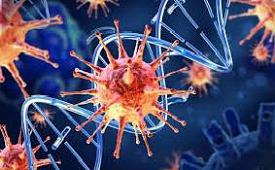
Indian scientists have started genome sequencing strains of the novel coronavirus isolated from patients in different parts of the country. The project is led by National Centre for Disease Control with the help of Cellular and Molecular Biology, Hyderabad, and the Institute of Genomics and Integrative Biology (IGIB), New Delhi.
Whole-genome sequencing is the method used to determine the complete DNA sequence of a specific organism’s genome. This will help the institutes to establish the family tree of the virus.
9 - Genrich Membranes developed ‘Membrane Oxygenator Equipment’

A Pune based company Genrich Membranes funded by Department of Science and Technology (DST) has developed a membrane oxygenator equipment to treat COVID-19 patients. The device is slated to be used to treat breathlessness, one of the critical symptoms of COVID-19.
This equipment can also be used to treat patients who have been discharged from Intensive Care Units (ICU). The device enriches oxygen in the air up to 35 per cent and does not require trained manpower for its operation.
10 - Fish gills used to develop efficient low-cost electro-catalysts
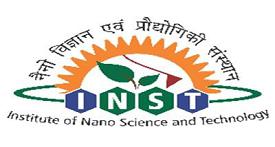
Scientists at the Institute of Nano Science and Technology (INST), Mohali have recently come up with an efficient, low-cost electro-catalyst from fish gills, that can help develop environment friendly energy conversion devices. This bio-inspired carbon nanostructure can help overcome the bottleneck in the realization of several renewable energy conversion and storage technologies such as fuel cell, bio-fuel cell, and metal−air battery.
The present strategy enriches a route to synthesize low-cost, highly efficient bio-inspired electro-catalyst that is better than commercial Platinum on carbon (Pt/C) catalyst and could be utilised as next-generation non-precious carbon-based electro-catalyst for energy conversion and storage applications.
11 - ARI researchers develop bug sniffer for efficient detection of pathogens
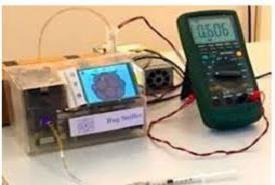
Researchers at the Agharkar Research Institute (ARI), Pune have developed a sensitive and low-cost sensor to rapidly detect bacteria. The portable device can detect as low as ten bacterial cells from a sample size of one milliliter in just 30 minutes.
The team calls it the ‘bug sniffer,’ which is a biosensor that uses synthetic peptides, magnetic nanoparticles, and quantum dots to detect the presence of bacteria, providing a cost- and time-effective way of screening water and foodborne pathogens.
12 - IIA conducted the first systematic study on Gamma-ray flux variability of luminous and high energy blazars

Researchers from the Indian Institute of Astrophysics (IIA), Bangalore have conducted the first systematic study on the gamma-ray flux variability nature on different types of blazars. Their study could provide clues to the processes happening close to the black hole, not visible through direct imaging.
Blazars are active galactic nuclei (AGN). Some blazars are thought to host binary black holes in them and could be potential targets for future gravitational-wave searches.
13 - IIT - Ropar designed ‘WardBot’

A team of researchers at the Indian Institute of Technology (IIT), Ropar has come up with a design of an autonomous ‘WardBot’. The design of an autonomous WardBot is such that, it can be instructed to receive and deliver food and medicines and necessary equipment from one room to the other from the remotely located control room.
Lines drawn on the floor will help the IR-sensor-fitted wardbot find its way. The bot will have at least twelve shelves and a carrying capacity of 4 to 5 kg. It should be able to serve 10 to 12 patients.
14 - IIT Mandi team developed Magnetic RAM capable of high data storage, faster computation

Researchers at the Indian Institute of Technology (IIT), Mandi have developed Magnetic Random-Access Memory (MRAM) technology. MRAM is faster, more energy-efficient and capable of storing more information in a smaller volume than existing data storage technologies.
Magnetic RAMs, in which data are represented as spin of electrons, promise better storage capabilities than conventional charge-based RAM. MRAM has the capability to transform next-generation computers, smartphones and other gadgets leveraging artificial intelligence (AI) and Internet-of-Things (IoT) technology.
15 - Scientists develop new model to predict Ionospheric Electron Density

Researchers from Indian Institute of Geomagnetism (IIG), Navi Mumbai have developed a global model to predict the Ionospheric Electron Density with larger data coverage—a crucial need for communication and navigation. IIG, Navi Mumbai is an autonomous institute of the Department of Science & Technology, Government of India.
The team of scientists has developed a new Artificial Neural Networks based global Ionospheric Model (ANNIM), using long-term ionospheric observations to predict the ionospheric electron density and the peak parameters.
16 - CeNS developed sensor for heavy metal detection in water
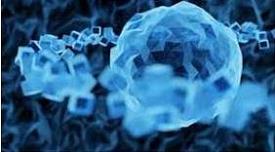
Centre for Nano and Soft Matter Sciences (CeNS) developed a compact solid-state sensor to detect the heavy metal ions in water. It is a portable device, which can help onsite detection in remote areas.
Heavy metal ions such as lead, mercury and cadmium pose severe potential threats to living beings, as they can easily be accumulated in the body and cannot be detoxified by any chemical or biological processes. The health hazards associated with heavy metal ions in water demanded the development of efficient and portable sensors for rapid onsite detection of these ions.
17 - Human trials of vaccine developed by Oxford University against novel corona virus began in UK

Human trials of vaccine developed by the Oxford University against the novel coronavirus began in the United Kingdom. Scientists have given the vaccine an 80% chance of success.
Elisa Granato is the first volunteer in an initial group of 800 to be part of the ground-breaking trial. The Oxford vaccine project is headed by Professor Sarah Gilbert. The vaccine is named “ChAdOx1 nCoV-19" and is made from a virus (ChAdOx1), which is a weakened version of a common cold virus.
18 - Feluda- CSIR’s low cost paper strip test for COVID-19
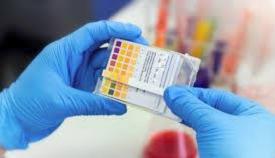
A team of scientists at the Institute of Genomics and Integrative Biology, The Council of Scientific and Industrial Research (CSIR-IGIB) has developed "Feluda” a low-cost coronavirus test strip. It is a simple way of detecting Severe acute respiratory syndrome coronavirus 2 (SARS-coV2). The total time required for the test is less than one hour.
The test has been developed by Debojyoti Chakraborty and Souvik Maiti. It is named after ''Feluda'', the detective character in legendary filmmaker Satyajit Ray's stories.
19 - ARCI developed advanced tool “NanoBlitz 3D”
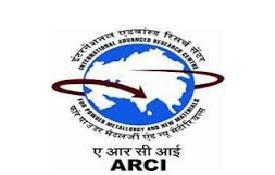
Scientists from International Advanced Research Centre for Powder Metallurgy and New Materials (ARCI) in collaboration with Nanomechanics Inc., Oak Ridge, USA have jointly developed an advanced tool for mapping nano-mechanical properties of materials like multi-phase alloys, composites, and multi-layered coatings. The tool is called NanoBlitz 3D.
An important aspect of this technique is, its high-throughput, with just a few hours of testing required for generating more than 10,000 data points, that can be processed using machine learning (ML) algorithms. ARCI is an autonomous institute under the Department of Science & Technology of the Government of India.
20 - NIF boosts new varieties of Anthurium
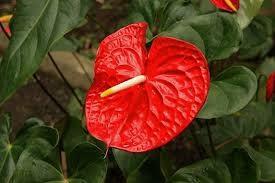
D Vasini Bai, a women innovator from Thiruvananthapuram, Kerala, has developed ten varieties of Anthurium, a flower with high market value, by cross-pollination. National Innovation Foundation-India has facilitated mass multiplication and large scale production of four highly demanded varieties through tissue culture technique at the Indian Institute of Horticultural Research (IIHR), Bangalore, for the diffusion of the varieties in similar agroclimatic zones of the country.
Anthurium is a vast group of beautiful blooming plants available in a wide range of colors. The plants of the varieties are having high demands, due to its use as indoor decorative plants.
21 - China's first Mars exploration mission named Tianwen-1

China National Space Administration (CNSA) has announced that the first Chinese Mars exploration mission has been named Tianwen-1. The name comes from the long poem "Tianwen," meaning Questions to Heaven, written by Qu Yuan (about 340-278 BC), one of the greatest poets of ancient China.
All of China's planetary exploration missions in the future will be named the Tianwen series. CNSA also unveiled the logo of China's planetary exploration missions, featuring the letter C, signifying China, international cooperation and capacity of entering space. China plans to launch the Mars probe in 2020.
22 - Scientists discover 19 interstellar asteroids between Jupiter and Neptune

Astronomers at the Universidade Estadual Paulista in Brazil, have discovered 19 interstellar asteroids (asteroids from outside our solar system) orbiting the sun between Jupiter and Neptune. These asteroids, the first known permanent population, belong to a group of space objects called Centaurs.
The findings have been published in the Monthly Notices of the Royal Astronomical Society & the lead author of the study was Fathi Namouni. The origin of Centaurs has been a mystery to astronomers since the first member of the group, called Chiron, was recognised in 1977.
23 - First merger of two black holes with unequal masses detected

The gravitational wave observatories at LIGO scientific collaboration have detected a merger of two unequal-mass black holes for the first time since it started functioning. The event is dubbed as GW190412. It was detected nearly a year ago.
One of the black holes was around 30 times the mass of the Sun and the other had a mass nearly 8 times the sun’s mass. The actual merger took place at a distance of 2.5 billion light years away. The Laser Interferometer Gravitational-Wave Observatory (LIGO) is the world’s largest gravitational wave observatory.
24 - NASA’s Hubble Telescope marks 30 years in space

NASA's Hubble Space Telescope completed 30 years in space. Hubble was carried aloft from the Kennedy Space Center aboard the space shuttle Discovery, along with a five-astronaut crew on April 24, 1990.
Hubble's top accomplishments include measuring the expansion and acceleration rate of the universe; finding that black holes are common among galaxies; characterising the atmospheres of planets around other stars and looking back in time, across 97% of the universe to chronicle the birth and evolution of stars and galaxies.
25 - JNCASR scientists developed a natural product based Alzheimer inhibitor
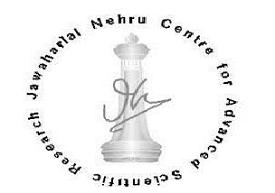
Scientists from Jawaharlal Nehru Centre For Advanced Scientific Research (JNCASR) have modified the structure of Berberine, a natural and cheap product similar to curcumin, available commercially, into Ber-D to use as a Alzheimer’s inhibitor. Their research work has been published in the scientific journal iSceince.
The team developed Ber-D to effectively target multifaceted Aβ toxicity of Alzheimer’s disease. Alzheimer’s disease is the most prevalent neurodegenerative disorder and accounts for more than 70% of all dementia.
26 - CSIR developed HCARD, a robot, to assist frontline COVID-19 healthcare warriors

CSIR lab, Central Mechanical Engineering Research Institute in Durgapur, has developed a robotic device HCARD, to help frontline healthcare workers in maintaining physical distance from those infected by coronavirus. HCARD stands for Hospital Care Assistive Robotic Device.
HCARD is equipped with various state-of-the-art technologies and works both in automatic as well as manual modes of navigation. This robot can be controlled and monitored by a nursing booth with a control station having such features as navigation, drawer activation for providing medicines and food to patients, sample collection and audio-visual communication.
27 - CSIR-CSIO transferred Electrostatic Disinfection technology for commercialisation
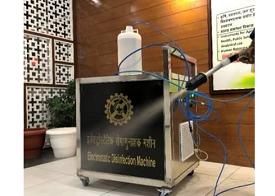
Council of Scientific and Industrial Research, CSIR's Scientific Instruments Organisation, CSIO, Chandigarh, has developed an innovative technology for effective disinfection and sanitisation to fight with corona pandemic. CSIR-CSIO has transferred this technology to a Nagpur-based company, Rite Water Solutions Private Limited for commercialisation and large-scale production.
Electrostatic Disinfection Machine has been developed based on the electrostatic principle. It produces uniform and fine spray droplets of disinfectants of 10 to 20 micrometres to kill micro-organisms and viruses.


